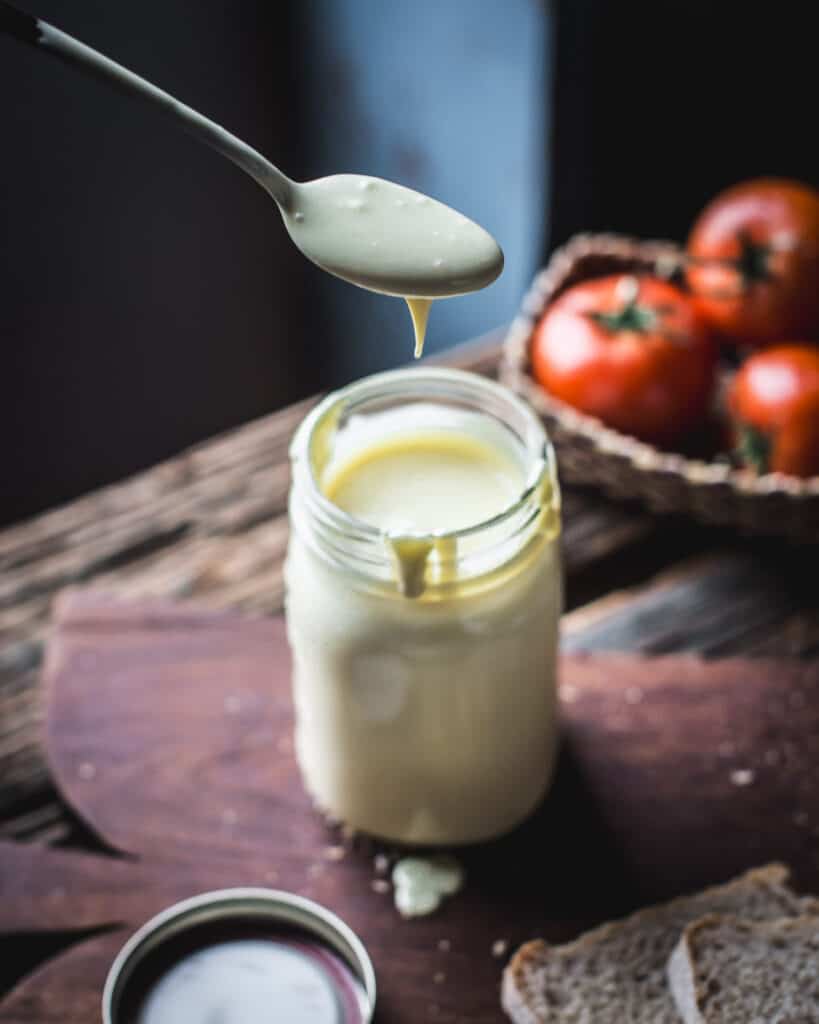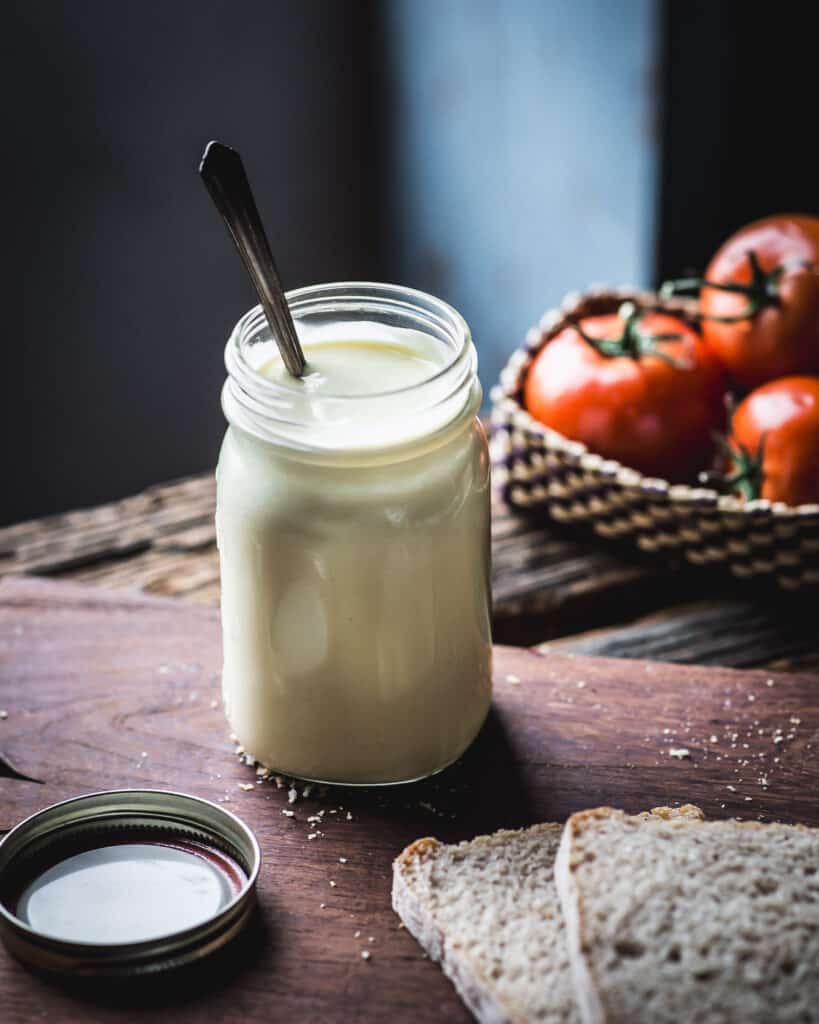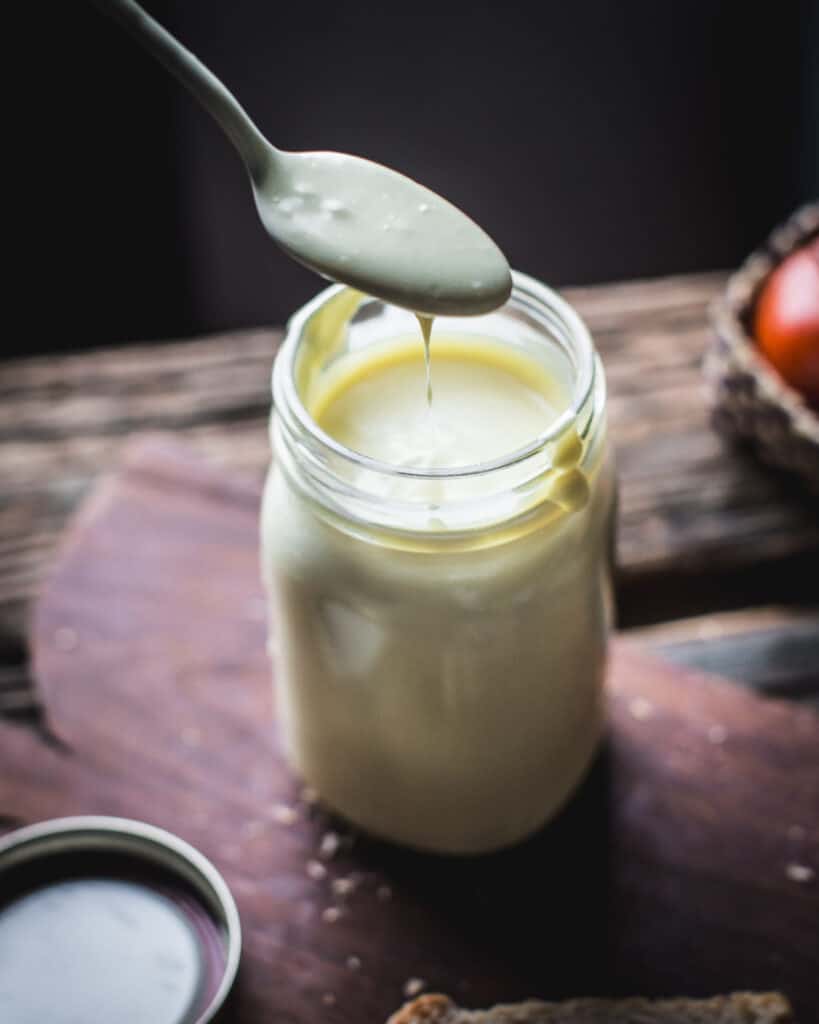
Whatever we want to create in the kitchen, mayonnaise seems to wait on the shelf like an edible WD40, able to fix anything. A bland surfactant that adds elegance, universal acceptance and just a smidge of thrilling fear to any room temperature picnic buffet. There are reasons to hate it.
Love, Love, Love
But I don’t. I adore the stuff.
In fact, for me sandwiches are always excuses to pile in more mayo. The tart creaminess, the luscious unctuous texture. It’s quietly addictive and I have been hooked ever since I could unscrew the lid of the wide mouthed jar.
In college, our cafeteria would receive cartons labeled “heavy-duty mayonnaise.” It was viscous and chalky, like a desk-top bottle of White-Out. It was very different from the creamy translucent blue ribbon mayo we had in our home fridge. Since mayonnaise is 100% fat calories, maybe the “heavy duty” had surpassed 100% fat, and had somehow broken the condiment space-time continuum, or perhaps had its own gravitational pull. I was impressed.
Mayonnaise is at once ubiquitous, yet mysterious. Where did it come from, and how did it get its name?

Where Did Mayo Come From?
I did a little research! Internet wisdom tells us that it was named after the port of Mahon, in Spain, where there was an important battle. Many important battles, in fact. I say humph. This oversimplified explanation of origin seems only semi-plausible. I have a hard time believing that after massive bloody battle, a chef thought “Hey, I think I will invent an olive oil based emulsion that will taste great on ham sandwiches.” Comfort food after the clash? I don’t know. Check out the convoluted story here.
Some sources credit the French for inventing mayo. There is the traditional aioli from Provence which is so very close to the recipe for mayo, although aioli usually has garlic (mayo doesn’t), and no citrus juice (mayo does). Again, seems plausible, but not conclusive. And the French word aioli comes from the Catalan term al i oli which means garlic and oil. It seems like the history of mayo ping pongs from Spain, to France and back to Spain again.

What’s In a Name
As for the name mayonnaise, there is much debate. The French word for “stir” is manier, which could have turned into the name mayonnaise. But in Spanish, something from the town of Mahon would be called (you got it) Mahonesa. We are back to square one. There is more research for me to do.
So, is mayonnaise a French or Spanish invention? My opinion is that mayo is a French culinary development, in the tradition of other fine sauces created by the French, such as Béarnaise, Hollandaise, and Béchamel. But seeing as Spain is the top producer of olives and olive oil in the world, chances are the French used Spanish olive oil when creating this condiment.
Also, I wonder if citrus shipments were processed through the ports of Mahon, as lemon or lime juice is one of the elements in a true mayonnaise, and not an element of aioli. Since citrus juice is used in most mayo, it would be interesting to head to the island of Minorca, the location of the port of Mahon, to do some research on what commodities processed through that port. Seville and Spain along the Mediterranean are still major producers of citrus, and traditionally mayo uses lemon juice. If lemon juice is a key element in mayonnaise, then perhaps mayo was developed in Mahon where there was a bustling trade of lemons.
I think this calls for a research trip to Spain. Sweet!
PrintTangy Mayonnaise Recipe
- Yield: 1 ½ cups (360ml) 1x
Ingredients
- 1/3 cup apple cider vinegar (75ml)
- Juice of ½ lime
- ½ tsp dry mustard (1gr)
- 2 tsp. Tabasco sauce (10ml)
- Pinch salt
- One egg yolk, room temperature
- 1 ¼ cup olive oil – approx. (310ml approx.)
Instructions
- Combine vinegar, lime juice, dry mustard, Tabasco sauce, and salt in the container of a blender. Pulse to combine well.
- Add the egg yolk, then allow the blender to run at a medium speed.
- Open the top feed hole of the blender, and slowly begin to trickle the olive oil into the spinning blades of the blender. Do not add the olive oil too quickly. The mayonnaise will thicken into a heavy creamy texture once you have added enough olive oil, you may not need to full amount to reach the desired consistency.

Leave a Reply